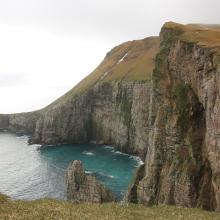
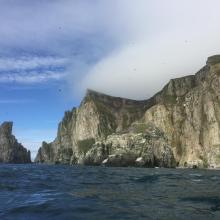
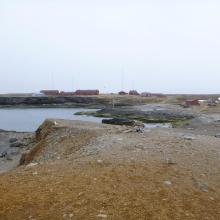
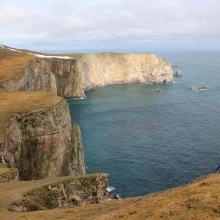
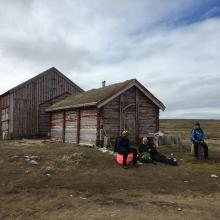
Bear Island
- Country:Norway
- Site number:1966
- Area:298,171 ha
- Designation date:12-11-2010
- Coordinates:74°26'N 19°01'E
Materials presented on this website, particularly maps and territorial information, are as-is and as-available based on available data and do not imply the expression of any opinion whatsoever on the part of the Secretariat of the Ramsar Convention concerning the legal status of any country, territory, city or area, or of its authorities, or concerning the delimitation of its frontiers or boundaries.
Overview
Bear Island, locally known as Bjørnøya, is an isolated island situated halfway between the Svalbard archipelago and the Norwegian mainland. The Site, which also covers the surrounding waters, is one of Europe’s few remaining intact ecosystems. The northern and western parts of the island are covered with lakes and small ponds which constitute 10% of the land area, and the south and east are dominated by tall mountain formations and some steep sea cliffs. 126 different bird species have been observed, of which 33 breed on the Site, including the razorbill (Alca torda) which is endangered in Svalbard. The seabird colonies in southern Bjørnøya are among the largest in the northern hemisphere: it is estimated that over one million seabirds gather here during the breeding season. The Site supports over 1% of the global population of the black-legged kittiwake (Rissa tridactyla), with an estimated 135,000 breeding pairs. It is also an important resting and foraging site for migrating birds such as pink-footed goose (Anser branchyrhynchus), barnacle goose (Branta leucopsis) and brent goose (Branta bernicla hrota). The rich shallow seas, where the Atlantic and Arctic waters meet, support the entire food chain and make it an important foraging area for many species. Monitoring programmes have been active since 1986, and there is a weather station of the Meteorological Institute on the island. The island is visited by scientific researchers, but most of the areas are untouched nature with no nearby human activity. In accordance with an assessment of the risk of acute oil pollution, no oil extraction activities will be initiated within a 65-kilometre zone around Bjørnøya.
Administrative region:
Svalbard
- National legal designation:
- Nature Reserve - Bjørnøya
- Last publication date:23-06-2023
Downloads
Ramsar Information Sheet (RIS)
Site map
Additional reports and documents
- Site management plan
- Other published literature
